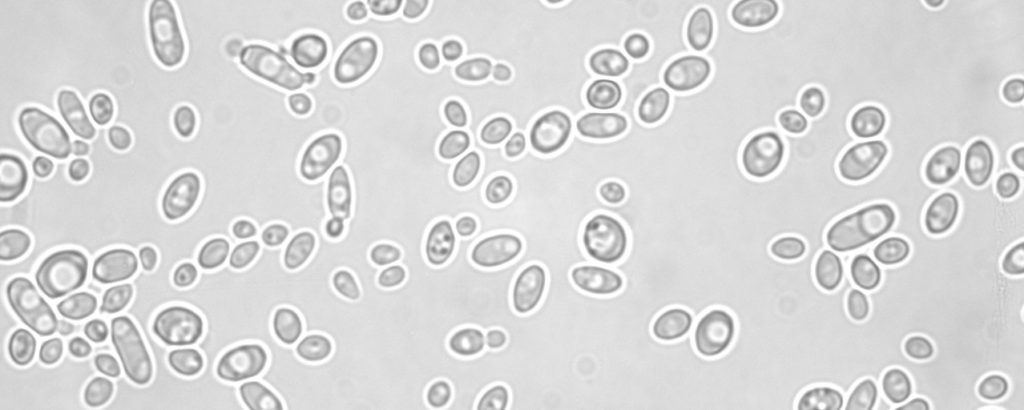RIBM 655 – Collection of brewing yeast

The today’s competitive milieu poses high demands for quality and balanced properties of beer. The success of a brand is not determined by marketing policies only but in the first place by excellent olfactory properties of the product. A balanced quality of the product cannot be achieved without appropriate attention being paid to input raw materials, production strain of brewing yeast, individual technological operations and the finished beer. A top and balanced quality of the product cannot be guaranteed without a pure yeast culture, which ensures stable required properties.
One of the sources of pure production strains is the Culture Collection of Brewing Yeasts of the Research Institute of Brewing and Malting, which is being maintained by the staff of the Microbiology group of the Research Department. It has been established in 1946 as part of the Collection of Yeasts and Yeast-like Microorganisms founded by Dr. Kocková-Kratochvílová. From 1953 on it has been an independent body. Since 1964, the Collection has been a member of the Federation of Czech and Slovak Collections of Microorganisms and is internationally registered under the code name RIBM 655. In its specialization on production strains of brewing yeasts it is unique in Central and East Europe.
In 1996 the Collection became, as one of highly specifically oriented and industrially applicable collections, part of the “National Program for Gene Pool Protection of Economically Important Microorganisms and Small Animals and their Use in Reference Diagnostics”. This project is also supported by the Czech government in the form of subsidies provided by the Ministry of Agriculture of the Czech Republic. The Program is organized under the auspices of the Committee for Microbial Genetic Resources; this body keeps tabs of the obligatory maintenance of functional existence of collections of microorganisms with appropriate character. The Committee was established in 1996 as a result of the International Convention for Gene Pool Protection that convened in 1992 in Rio de Janeiro and the Budapest Agreement of 1994. Microorganisms were incorporated into the latter agreement in the form of an amendment. In agreement with the subsequent EU standard, our country introduced appropriate legislative measures in the form of a “Bill on Biodiversity Preservation”. This has a prime impact on the maintenance and preservation of all existing collections of microorganisms and on duties ensuing from these activities; according to it, destruction of registered collections is illegal.
The collection contains two types of production strains of brewing yeasts. According to the 1998 classification of Kurtzmann and Fell, the deposited strains belong to the species Saccharomyces pastorianus and Saccharomyces cerevisiae. A considerable part is formed by the bottom yeast Saccharomyces pastorianus (synonymum S. carlsbergensis). The top yeast S. cerevisiae is represented by five strains. The collection is continuously supplemented and contains at present 115 strains. Several yeast strains are stemming from existing or closed breweries.
A parallel part of the whole collection is a sub-collection of “wild-type” strains containing 14 strains of wine yeasts Saccharomyces cerevisiae, 40 strains of the genera Brettanomyces, Candida, Debaryomyces, Hansenula, Pichia and Saccharomyces and 23 brewery contaminating yeasts isolates from the genera Candida, Cryptococcus, Rhodotorula and Saccharomyces.
Another parallel collection is the collection of isolates of lactic fermentation bacteria acquired from brewery plants in the Czech Republic. At present, this collection contains 63 strains of genera Lactobacillus, Pediococcus and Leuconostoc. The bacteria were isolated and identified by the Microbiology group of the Institute in 1996 - 2001. They are maintained in sterile half-fat milk and in parallel as lyophilisates.
The brewery and wild-type yeast collections are maintained on wort agar slants under paraffin-covered cotton-wool closures and, in parallel, on wort agar slants overlaid by sterile liquid paraffin in a cold room. These time-proven modes of culture maintenance make it possible to supply a client very fast with a given strain in an active condition on an agar slant or, if required, propagated in 1.5 l wort. The latter mode facilitates the transfer of the production strain into the production process. Since 2006 yeast strains have been maintained in cryotubes with cryoprotective medium in liquid nitrogen at -196°C. Liquid nitrogen storage (cryopreservation) is considered to be the optimum procedure for long-term preservation of yeast samples in a viable state.
The collection is a source of pure production cultures of brewery yeast not only for Czech breweries but also for clients in Central and East Europe and from overseas (USA, Australia, Vietnam). Research Institute of Brewing and Malting, as the operator and guardian of the Culture Collection of Brewing Yeasts, ensures commercial and scientific use of the maintained strains for teaching and research purposes. The collection is thus made use of not only by breweries but also by research establishments - Institute of Chemical Technology Prague, Charles University Prague, Masaryk University Brno, Academy of Sciences of the Czech Republic, etc.
As stated in the Collection Status, the CCBY is an integral part of the Research Institute of Brewing and Malting; its possible endangering or abolition has to be consulted with the Commission for Surveillance of State-Registered Collections of Microorganisms, which was established at the Ministry of Environment of the Czech Republic.
